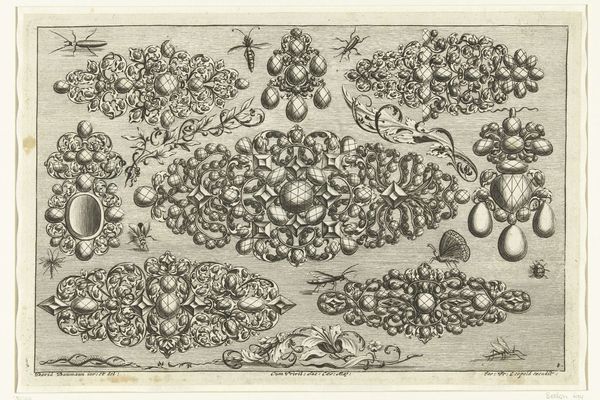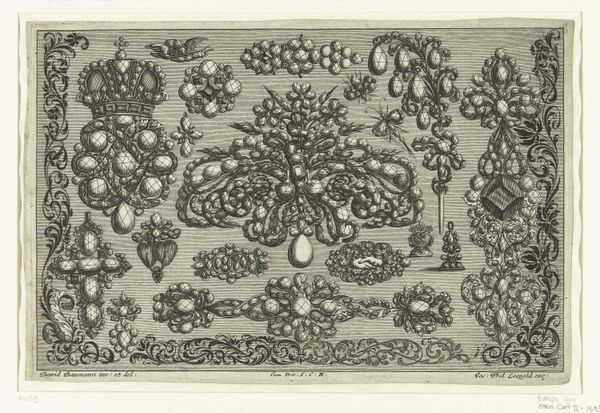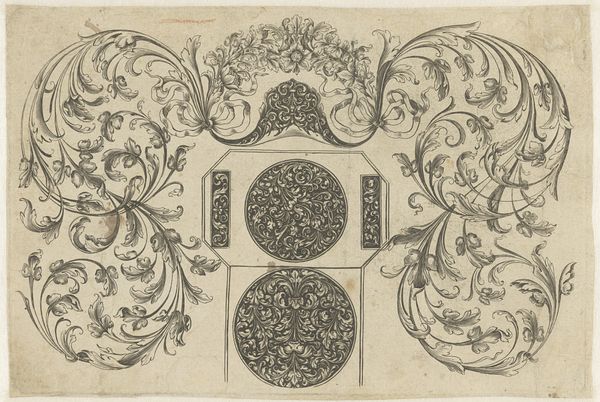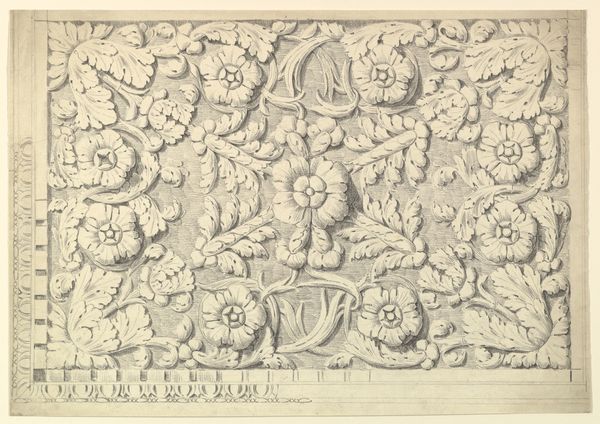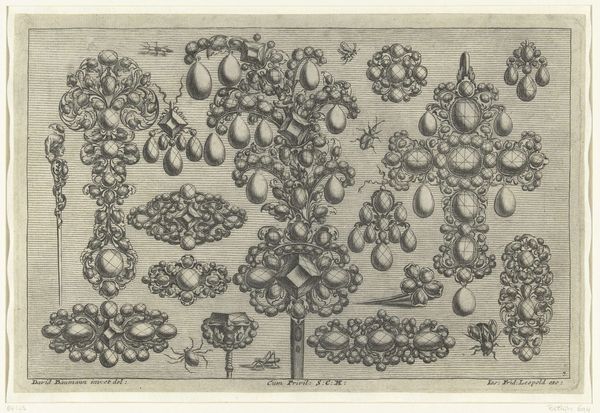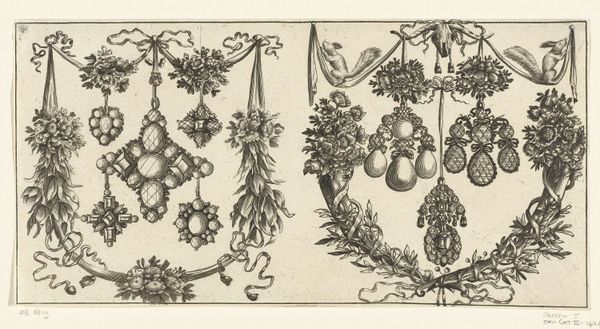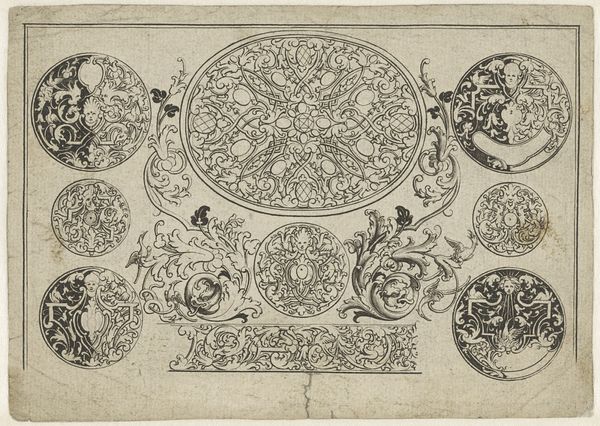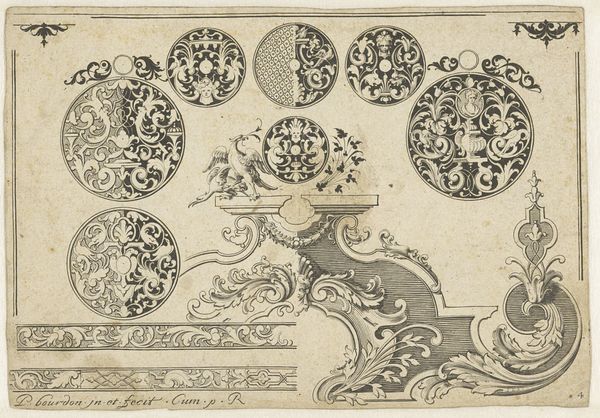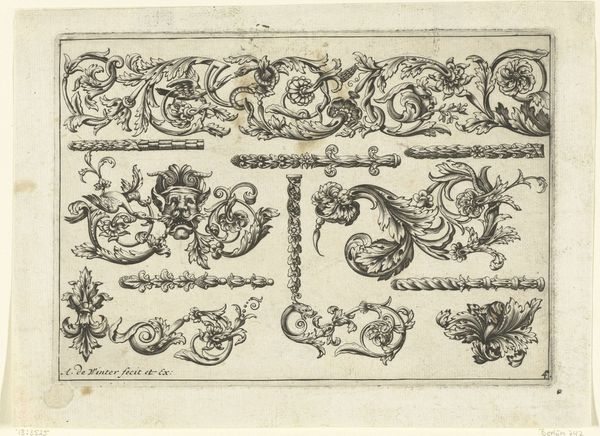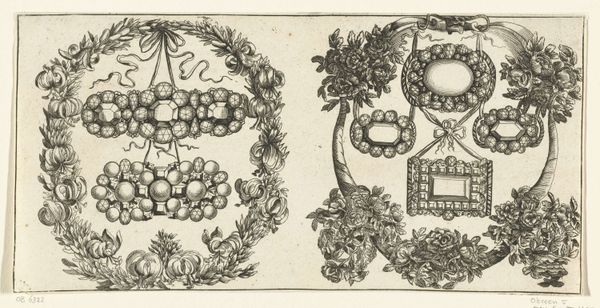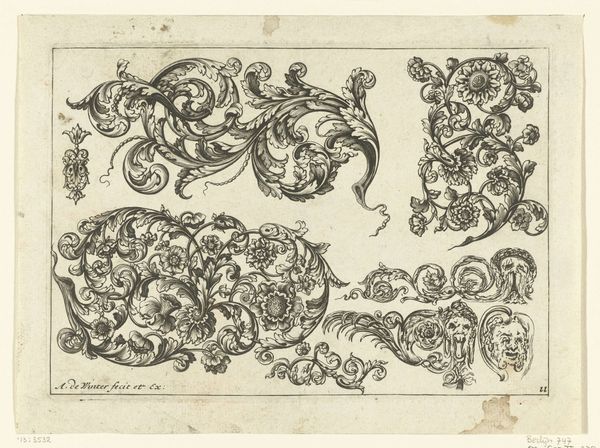
drawing, print, ink, engraving
#
drawing
#
baroque
#
pen drawing
# print
#
figuration
#
ink
#
decorative-art
#
engraving
Dimensions: height 180 mm, width 270 mm
Copyright: Rijks Museum: Open Domain
Curator: Looking at this densely packed image, I immediately sense an opulent, slightly intimidating aesthetic. So much detail, so many glittering… possibilities? Editor: This engraving, titled "Tweeëntwintig ontwerpen voor juwelen," or Twenty-Two Designs for Jewelry, was created around 1695 by Joseph Friedrich Leopold. As a piece from the late 17th century, it provides a fascinating lens into the socio-cultural landscape of luxury and the emerging roles of artists within that system. Curator: It's striking how this sheet serves almost like a catalog. We see not just static adornment but a reflection of early consumer culture. Each jewel becomes a symbol loaded with gendered and class associations, a deliberate performance. Editor: Exactly! The work embodies the decorative arts' integration into social life and displays how artists were key in propagating standards of taste. These weren't merely illustrations; they were instrumental in influencing trends and reflecting back certain power dynamics. These pieces weren't accessible to all, marking distinctions. Curator: What do you make of the recurring motifs? Those egg-shaped jewels for example? I see what appears to be spiderwebs too? Perhaps they symbolize something more sinister woven within elite circles? I am not entirely certain about the possible meanings of these images for women as symbols within jewelry design itself. Were there conversations or subversions occurring even within these tiny spaces of decorative excess? Editor: Well, within this period, the aristocracy and merchant classes deployed such elaborate items as ways of manifesting both cultural superiority and financial capital, both crucial to self-preservation. Consider that jewelry went far beyond aesthetics; it broadcasted wealth, social status, and at times even political affiliations, thereby making such "mere decoration" rather important during the rise of court societies and mercantilism. Curator: I’m struck by how the visual language used in jewelry design transcends mere embellishment and really embodies so much regarding power. Editor: Ultimately, it allows us to critically analyze systems of social exchange inherent within early forms of consumerism. The politics of luxury always reflect who had access.
Comments
No comments
Be the first to comment and join the conversation on the ultimate creative platform.
